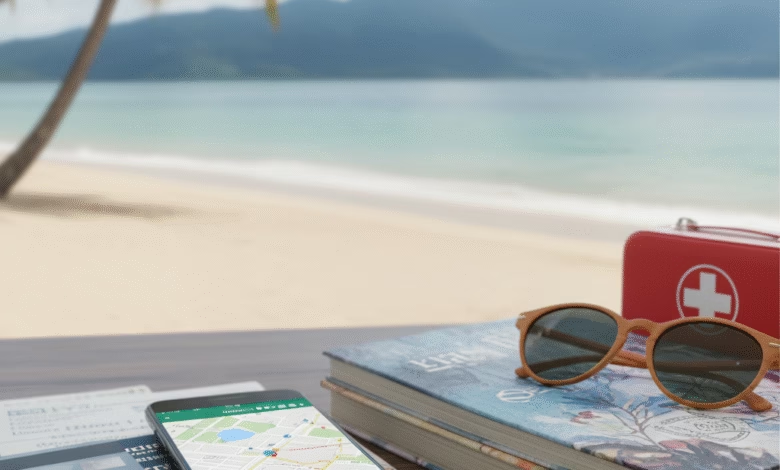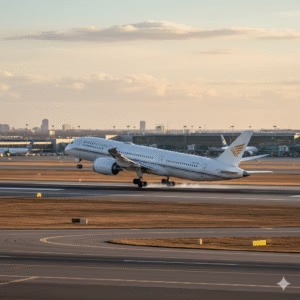When and when is the best time to purchase travel insurance?
Find out when to choose travel insurance for your dream trip

Thinking about your next vacation? While you’re busy booking flights and hotels, don’t forget one of the most crucial items on your checklist: travel insurance. It’s not just another expense; it’s a vital safety net that can protect you from a wide range of unexpected financial disasters. But with so many options and so much conflicting advice, when is the best time to buy it? And what kind of coverage do you really need?
In this comprehensive guide, we’ll demystify the process of buying travel insurance. We’ll show you exactly when you should make this purchase, what to look for in a policy, and why this simple step can save you thousands of dollars and countless headaches. Whether you’re planning a short trip or an extended journey, understanding the timing and benefits of travel insurance is a must.
The Best Time to Buy Travel Insurance: It’s Sooner Than You Think

When it comes to travel insurance, timing is everything. While you can often purchase a policy right up until the day before your departure, buying it early offers significant advantages.
The Golden Window: As Soon as You Make Your First Booking
The absolute best time to buy travel insurance is immediately after you make your first trip booking. This could be your airline ticket, a cruise, or a non-refundable hotel reservation. Most comprehensive travel insurance plans include a crucial feature called pre-existing condition coverage, but this coverage often has a time-sensitive requirement.
To be eligible for this benefit, you typically need to purchase the policy within a specific timeframe after your initial trip deposit. This “free look” period is usually between 10 to 21 days. Buying early ensures that any pre-existing medical conditions you or a family member have will be covered if they cause you to cancel your trip.
Maximizing Your “Cancel for Any Reason” Coverage
Another major benefit of buying early is access to “Cancel for Any Reason” (CFAR) coverage. This is a premium add-on that allows you to cancel your trip and get a significant portion of your non-refundable costs back, regardless of the reason. To qualify for CFAR, you must usually purchase the policy within that same 10-21 day window after your first booking. This coverage offers unparalleled flexibility and peace of mind, protecting you from a wide range of unforeseen circumstances that a standard policy might not cover, such as a fear of travel or a change of heart.
Understanding Different Types of Travel Insurance Coverage
Travel insurance is not a one-size-fits-all product. There are several different types of coverage, and the best plan for you depends on your destination, travel style, and personal needs.
Trip Cancellation and Interruption
This is the cornerstone of most policies. It protects your financial investment if you have to cancel or cut your trip short for a covered reason. Covered reasons typically include:
- An unexpected illness, injury, or death of you or a traveling companion.
- A natural disaster at your destination.
- A terrorist attack in your destination city.
- A sudden job loss.
This coverage can reimburse you for non-refundable costs like flights, tours, and prepaid accommodations.
Medical Coverage and Evacuation
This is arguably the most important type of travel insurance, especially for international travel. Your domestic health insurance plan may offer limited or no coverage outside of your home country. Medical travel insurance covers emergency medical expenses, including doctor’s visits, hospital stays, and prescription medications.
Medical evacuation coverage is a critical component of this. It pays for the cost of transporting you to a medical facility or even back home if you’re in a remote location and need specialized care. The cost of a medical evacuation can run into the tens of thousands of dollars, making this coverage an essential safeguard.
Baggage and Personal Items Protection
This coverage protects you from financial loss if your luggage is delayed, lost, or stolen. It can reimburse you for essential items you have to buy while your bags are missing and can help cover the cost of replacing your belongings if they are never found.
Rental Car Insurance
While many credit cards offer some form of rental car insurance, a dedicated travel insurance policy can provide more robust coverage. It can cover damages to the rental car itself and often has a lower deductible than the insurance offered by the rental car company.
Factors to Consider When Choosing a Policy

Once you understand the different types of coverage, you need to think about your specific trip and how to find the best policy.
Your Destination
- Domestic vs. International: If you’re traveling within the U.S. or Canada, your existing health insurance might offer some coverage. However, it’s always wise to check your plan’s details. For international travel, medical insurance is non-negotiable.
- Adventure Travel: If you’re planning activities like skiing, scuba diving, or rock climbing, you need a policy that specifically covers adventure sports. Standard plans often exclude these high-risk activities.
Your Trip’s Cost
The cost of your travel insurance policy is usually a small percentage of your total trip cost. If you have a significant financial investment in your vacation—like a cruise or a multi-destination tour—a comprehensive policy is a no-brainer. If your trip is low-cost and easily refundable, a basic medical-only plan might suffice.
Your Personal Health
If you have a pre-existing medical condition, you must buy a policy that covers it. As mentioned, this requires buying early. Even if you’re in perfect health, a sudden illness or accident can happen to anyone, anywhere.
Real-Life Scenarios: How Travel Insurance Saves the Day
Let’s look at a few examples to see the true value of travel insurance in action.
- The Unexpected Illness: You’re excited for your two-week European tour, but a few days before you leave, your child gets the flu and can’t travel. With trip cancellation insurance, you can get most of your money back for flights and hotels, allowing you to reschedule the trip without a huge financial loss.
- The Medical Emergency Abroad: You’re hiking in South America and twist your ankle badly. You need to be airlifted to a major hospital. Without travel insurance, this could cost you thousands of dollars out of pocket. With a good policy, the evacuation and medical bills are covered, letting you focus on recovery.
- The Lost Luggage: You arrive in Rome, but your suitcase doesn’t. Your baggage insurance can provide you with a stipend to buy new clothes and toiletries, so you don’t have to miss out on your vacation while waiting for your bags to show up.
Final Thoughts: The Cost of Peace of Mind

Ultimately, buying travel insurance is about protecting your financial investment and ensuring your safety. The cost of a policy is a small price to pay for the security it provides. Don’t leave your trip to chance. By understanding when to buy and what to look for, you can choose the perfect policy and embark on your journey with confidence and peace of mind. Your adventure awaits—make sure you’re protected.





